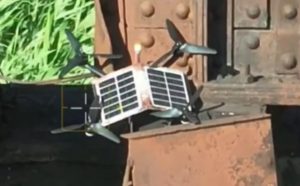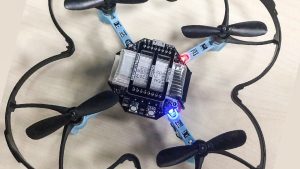Airbus Advances into Drone Technology with High-Altitude Base in Kenya
Airbus, a global leader in aeronautics, is set to revolutionize the Drone Industry with its latest venture in Kenya. The company has announced plans to establish a cutting-edge drone base in Laikipia, Kenya, marking a significant leap in high-altitude drone operations.
The base, set to be operational from the beginning of 2024, will serve as a launchpad for Airbus’s solar-powered Zephyr High Altitude Platform Station (Zephyr HAPS).
Strategic Location and Local Collaborations
Kenya’s selection as the first operational base for the Zephyr drone is a strategic move by Airbus. The company’s decision is influenced by Kenya’s geographical advantages, including the availability of open, flat spaces for safe landings and takeoffs, and favorable weather conditions for up to ten months a year.
In collaboration with local telecommunications giants Safaricom Plc and Telkom Kenya, Airbus aims to enhance 5-G connectivity in the region. Samer Halawi, CEO of AALTO, a subsidiary of Airbus, emphasized the potential of this initiative to provide more connectivity and earth observation services from an unprecedented altitude.
AALTO’s Zephyr Drone: A Game-Changer in Connectivity
The Zephyr drone, developed by AALTO, is a lightweight, solar-powered aircraft capable of staying Aloft for an impressive 200 days. Its maiden flight in 2018 showcased a remarkable endurance of 64 days, setting a new standard in Drone Technology.
Zephyr’s design allows it to replace mobile phone towers in remote areas or during natural disasters, offering unparalleled connectivity and bridging the digital divide that hampers global mobile access.
With a coverage area of 7,500 square kilometers, equivalent to up to 250 ground-based towers, Zephyr can act as a terrestrial tower in the sky. It integrates seamlessly into mobile operators’ networks, making it an optimal solution to expand coverage in areas with lower population densities or challenging terrains.
Broader Applications and Impact
Beyond enhancing connectivity, Zephyr’s Earth Observation capabilities are reportedly set to play a crucial role in tackling environmental and security challenges. It is expected to aid in forest-fire management, border security monitoring, and providing real-time updates on transportation networks.
The establishment of an assembly line, maintenance facility, and network operating center in Kenya not only represents a technological advancement but also a significant economic opportunity for the region.
As Airbus forges ahead with its high-altitude drone hub in Kenya, it’s clear that this venture represents more than just technological innovation. It’s a commitment to unlocking new possibilities in connectivity, environmental monitoring, and global communication, heralding a new era in unmanned aerial vehicle operations【438†source】.





















+ There are no comments
Add yours